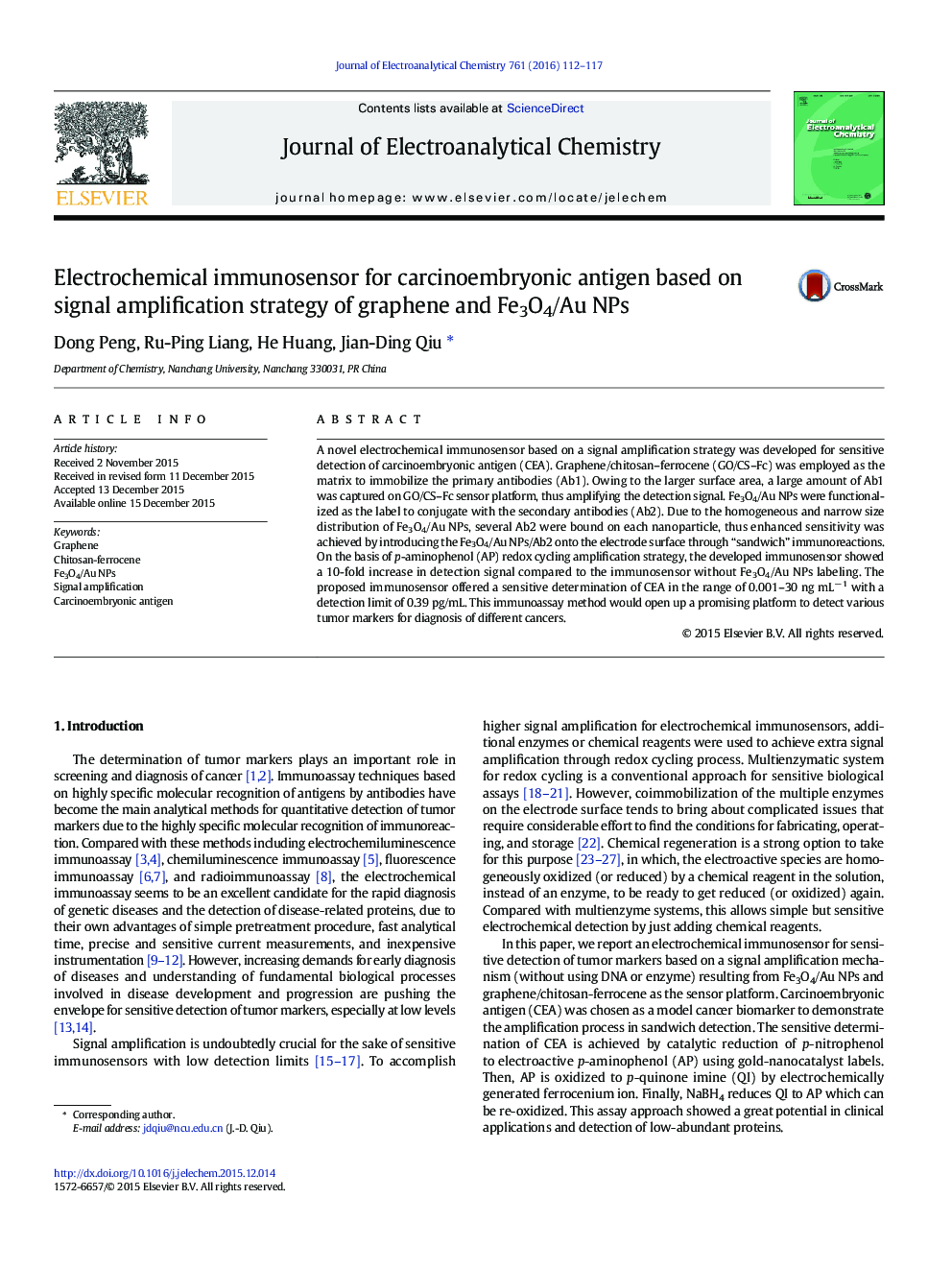| Article ID | Journal | Published Year | Pages | File Type |
|---|---|---|---|---|
| 218083 | Journal of Electroanalytical Chemistry | 2016 | 6 Pages |
•Signal amplification strategy-based electrochemical immunosensor for detection of CEA•GO/CS–Fc was employed as the matrix to immobilize antibodies.•Enhanced sensitivity was achieved by introducing Fe3O4/Au NPs onto electrode surface.•p-Aminophenol redox cycling was utilized to amplify the electrocatalytic current.
A novel electrochemical immunosensor based on a signal amplification strategy was developed for sensitive detection of carcinoembryonic antigen (CEA). Graphene/chitosan–ferrocene (GO/CS–Fc) was employed as the matrix to immobilize the primary antibodies (Ab1). Owing to the larger surface area, a large amount of Ab1 was captured on GO/CS–Fc sensor platform, thus amplifying the detection signal. Fe3O4/Au NPs were functionalized as the label to conjugate with the secondary antibodies (Ab2). Due to the homogeneous and narrow size distribution of Fe3O4/Au NPs, several Ab2 were bound on each nanoparticle, thus enhanced sensitivity was achieved by introducing the Fe3O4/Au NPs/Ab2 onto the electrode surface through “sandwich” immunoreactions. On the basis of p-aminophenol (AP) redox cycling amplification strategy, the developed immunosensor showed a 10-fold increase in detection signal compared to the immunosensor without Fe3O4/Au NPs labeling. The proposed immunosensor offered a sensitive determination of CEA in the range of 0.001–30 ng mL− 1 with a detection limit of 0.39 pg/mL. This immunoassay method would open up a promising platform to detect various tumor markers for diagnosis of different cancers.
